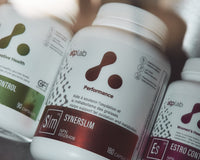HOW TO READ A LABEL SERIES - Part 7: The Truth About Flavors

You finish a great workout. Maybe you hit some PRs, maybe you're just proud you squeezed it in despite the chaos of life. Either way, you're feeling good — energized, accomplished, ready to tackle what’s next.
You whip up a protein shake. It’s smooth. Delicious. Honestly? Better than a milkshake from the nearest fast-food joint.
Life is good…
Until suddenly — you start farting. And not the cute kind.
You're grateful no one else is around, you're lighting up the room.
Your first thought?
"It’s the protein. I must be sensitive to dairy."
But is it really the dairy (the lactose)?
Maybe.
But maybe not.
Let’s break it down:
Artificial Flavours = Gastro Issues
A study published in Nutrients found that participants who increased their intake of zero-calorie artificial sweeteners (the amount found in just 1–2 artificially sweetened drinks) experienced more GI symptoms — like diarrhea, constipation, and post-meal discomfort.
Meanwhile, the group who avoided artificial sweeteners saw a significant reduction in those same symptoms.
Microfractions: The Unsung Heroes of Digestion
Microfractions are naturally occurring peptides in whey protein that help your body digest and absorb the protein more efficiently.
If your protein powder does not retain these microfractions, digestion could be impaired.
So why would a protein powder lose its microfractions?
-
Excess heat during processing
(That’s why atplab uses cold ultra-filtration. Not all companies do.) -
Less actual whey protein
(Some companies cut corners by adding fewer grams of real whey and "topping up" the protein count with cheap amino acids — which don’t come with microfractions.) -
Over-processing to remove ALL fat and carbs
(If your protein powder claims 0g fat and 0g carbs, that’s a red flag. Whey protein naturally contains small amounts of both — removing them completely often means over-processing and destroying the whey food matrix, including microfractions.)
Wait — What About Lactose?
If you're genuinely lactose-sensitive (many people are), switching from a whey concentrate to a whey isolate can help, since it contains less lactose. Some people will have to completely remove whey protein. Isolates contain less lactose and are easier to digest for some individuals.
But Remember, the problem might be the junk that got added — not the whey itself.
What to Look For in a Protein Powder
-
Organic, non-GMO stevia (not artificial sweeteners)
-
No artificial flavours
-
Microfractions listed on the label
A small amount of natural carbs and fats (this means it hasn’t been over-processed)






